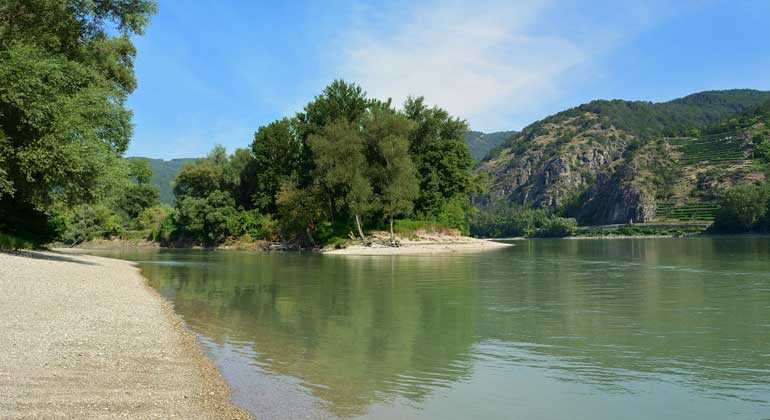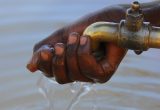Floodplains improve the water quality of rivers
Many rivers are polluted by nitrogen inputs. An international research project involving the IGB has now investigated for the first time the extent of these inputs, the extent to which they are reduced and the contribution made by floodplain areas to this in the Danube catchment area. The results show how useful the large-scale renaturation of river floodplains is for improving water quality.
Riverine floodplains are among the most species-rich ecosystems on earth. Because they form the interface between land and water, they are hotspots of nutrient turnover and biodiversity. Along many rivers, however, numerous floodplains have been cut off from waterways or converted to other uses. At the same time, too many nutrients enter the water, especially nitrogen. Both degrade water quality and threaten biodiversity – both in the rivers themselves and in the seas into which they flow.
To a certain extent, rivers have the ability to break down nutrients in the river water itself and in the floodplains. Researchers working on the international IDES collaborative project have determined just how large the contribution of floodplains is to reduce nitrogen for the Danube River basin. “The special feature of our study is that we looked at such a large area for the first time, because the Danube has the second largest catchment area in Europe,” said IGB scientist and co-author Dr. Andreas Gericke.
The Danube catchment covers an area of more than 800000 km2 and stretches across 19 countries. Some 70 to 80 percent of its floodplains have been cut off from the river or converted into agricultural land in recent decades, depriving it of its ecosystem functions and services. The researchers now wanted to know how much of the nutrient retention is provided by the remaining active floodplains. To do this, the team used the MONERIS model developed at the IGB, which determines nutrient inputs from various sources – including the atmosphere, fertilizer use in agriculture and sewage treatment plants – and calculates their fate and transport in the river system. According to the study, 500,000 metric tons of nitrogen enter the waters of the Danube River Basin each year, predominantly as nitrate. Most of the inputs come from agriculture (44 percent) and urban sources (30 percent). Two-thirds of these inputs reach the Black Sea, and one-third, or 160000 metric tons, are degraded in water bodies.
To find out how large the share of floodplains in nitrate retention is, the team supplemented the MONERIS calculations with further modeling for the Danube and its tributaries Sava, Tisza and Jantra. There, 3842 km2 of floodplains are found, accounting for nearly half of all active floodplains in the Danube basin. “Most nitrate is degraded in the water network, for example by nitrogen being taken up by plankton or converted by bacteria (denitrification). But floodplains can also contribute to a not inconsiderable extent to nutrient retention,” Andreas Gericke reported. The results show that active floodplains degrade 33200 tons of nitrate annually, which corresponds to 6.5 percent of the input. Based on the model results, the researchers estimate that nitrate removal could be increased by 14.5 percent if the approximately 1300 km² of potentially restorable floodplains and oxbow lakes were reconnected to the main streams.
“Our results impressively show that it makes sense to preserve floodplains and restore their functions – not only because of their ability to break down nutrients, but also to preserve biodiversity among many other ecosystem services,” emphasized Martin Tschikof from the Institute of Hydrobiology and Water Management at BOKU. He is the lead author of the study. The simplified assumptions and data allow only limited statements. However, they are a good basis for better consideration of floodplains and their reconnection for good water quality in Europe’s major river basins.
QUELLE
Leibniz-Institut für Gewässerökologie und Binnenfischerei (IGB) 2022 | Dr. Andreas Gericke








